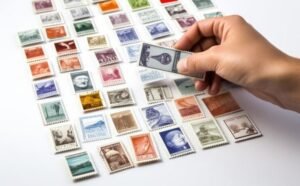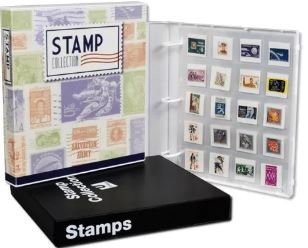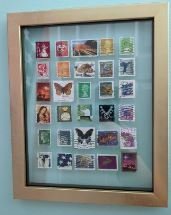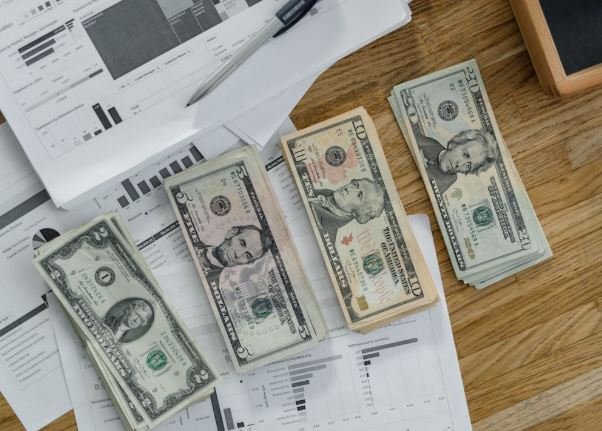Using collectible stamps accurately is a crucial skill for any stamp collector, whether you’re just starting or you’ve been collecting for years. How to value collectible stamps accurately is a question that many enthusiasts face, especially when trying to determine the true worth of a rare or special stamp. Unfortunately, the market for collectible stamps is often filled with misinformation, overinflated prices, and hype, making it easy to get caught up in unrealistic valuations. In this article, we will explore how to value collectible stamps accurately, helping you avoid the common traps and know the true worth of your collection.

Why Accurate Stamp Valuation is Essential
Before diving into how to value collectible stamps accurately, it’s important to understand why this process is so crucial. First and foremost, knowing the true value of your stamps helps you make informed decisions when buying, selling, or trading stamps. Whether you’re purchasing a new stamp for your collection or selling an old one, accurate valuations ensure that you’re not overpaying or underselling.
In addition, stamp values can fluctuate over time, so understanding how to value collectible stamps accurately helps you stay updated on market trends and make smart investments. By understanding the nuances of stamp pricing, you can avoid getting swept up by hype that often leads to inflated prices.
Step 1: Consider the Rarity of the Stamp
One of the primary factors in how to value collectible stamps accurately is rarity. A rare stamp is typically worth more than a common one, but rarity alone is not enough to determine its true value. To assess rarity, you need to look at the stamp’s production numbers, historical context, and demand among collectors.
Some stamps are rare because they were only printed in limited quantities, while others may be rare due to printing errors or unique features. When determining how to value collectible stamps accurately, check the print run and the number of known copies in circulation. Be wary of sellers or auctioneers who try to hype the rarity of a stamp without providing concrete evidence.

Step 2: Assess the Condition of the Stamp
Condition is another critical factor in how to value collectible stamps accurately. Stamps in pristine condition will always command a higher price than stamps that are damaged, torn, or faded. When evaluating the condition of your stamp, consider factors such as:
- Centering: A stamp that is well-centered is more valuable than one that is off-center.
- Perforations: Check if the perforations are intact and undamaged.
- Postmarking: Stamps that have been postmarked or canceled may have a lower value than unused, mint stamps.
- Color and Paper Quality: The color should be vibrant and the paper should be free of stains or creases.
When trying to figure out how to value collectible stamps accurately, remember that the more pristine the condition, the higher the stamp’s worth will typically be.
Step 3: Use a Stamp Catalog
To truly understand how to value collectible stamps accurately, one of the best tools you can use is a stamp catalog. These catalogs provide extensive information on stamps from around the world, including their estimated values based on condition, rarity, and demand. The most widely used stamp catalogs are:
- Scott Catalog: The Scott Catalog is one of the most trusted sources for U.S. stamp values and is used by many collectors.
- Stanley Gibbons: This catalog is especially useful for those focusing on British and Commonwealth stamps.
- Michel Catalog: A comprehensive guide to European and worldwide stamps.
Consulting a stamp catalog will help you cross-reference the information and give you an informed baseline on how to value collectible stamps accurately. Keep in mind that catalog prices may vary depending on the market conditions, so it’s important to stay current.
Step 4: Research the Market
The market for collectible stamps can be volatile, so it’s important to stay informed about current market trends when learning how to value collectible stamps accurately. Stamp prices can change based on factors such as:
- Demand: Some stamps, especially those tied to specific events or anniversaries, may see a spike in demand, which can temporarily inflate their value.
- Economic Factors: The overall state of the economy can also impact the price of stamps. In times of financial instability, collectors may be less likely to make large purchases, causing prices to drop.
- Auction Results: Pay attention to recent auction results to see what similar stamps are selling for in the current market.
You can track stamp prices by following online auction sites, stamp trade shows, and collector forums. Being aware of the current market landscape will help you avoid the hype surrounding high-profile stamp sales and give you a more accurate idea of how to value collectible stamps accurately.

Step 5: Avoid the Hype and Overinflated Prices
A major challenge when figuring out how to value collectible stamps accurately is the prevalence of hype and overinflated prices. Many sellers will try to persuade you that a stamp is worth more than it actually is, using buzzwords like “extremely rare” or “once-in-a-lifetime find.”
It’s important to approach such claims with skepticism. Always do your research before making a purchase, and don’t rely solely on the seller’s opinion. Using stamp catalogs and comparing prices from multiple sources will help you avoid the trap of falling for inflated values based on hype.
Additionally, be cautious when buying stamps at auctions or online marketplaces. While some sellers may genuinely offer rare or valuable items, others may try to push high-priced stamps that are not as valuable as they appear. Always verify the authenticity and condition of the stamp before committing to a sale, and don’t be afraid to walk away if the price seems too high.
Step 6: Consult an Expert
If you’re still unsure about how to value collectible stamps accurately, consider consulting a professional appraiser or a trusted expert in stamp valuation. Professional appraisers have the knowledge and experience to provide accurate assessments based on factors that may not be immediately obvious to a beginner. Many appraisers work with auction houses or stamp dealers, so they can provide valuable insight into both the current market and the potential value of your stamps.

Stamp collecting is a rewarding hobby that allows enthusiasts to connect with history, culture, and art. But to truly enjoy and preserve your collection, it’s essential to use the best stamp collecting supplies available
Conclusion
Learning how to value collectible stamps accurately is essential for any collector looking to buy, sell, or trade stamps. By understanding the factors that influence stamp value, including rarity, condition, and market trends, you can avoid falling prey to inflated prices and overhyped stamps. Always use reliable resources like stamp catalogs, consult experts when needed, and keep a critical eye on market conditions to ensure that you are accurately assessing the true worth of your stamps.




